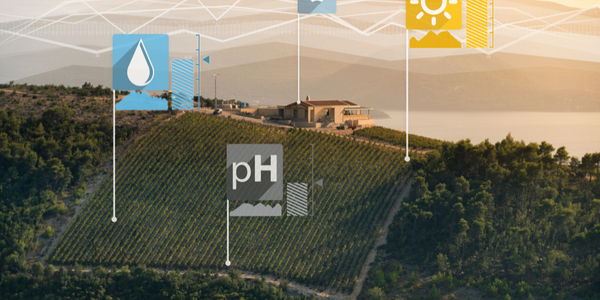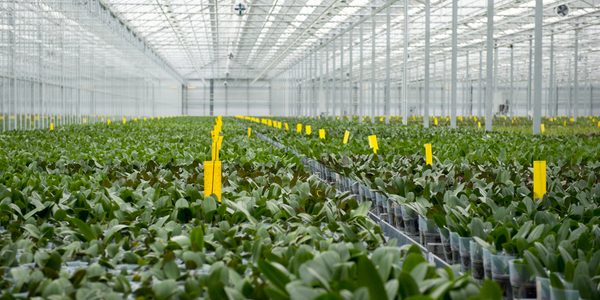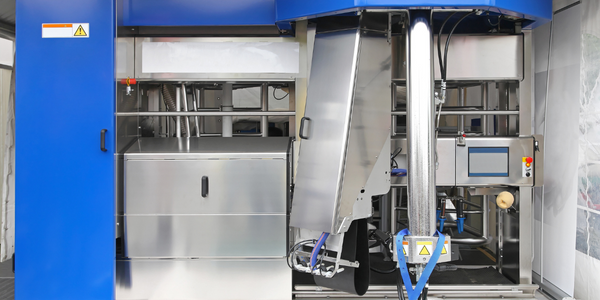Applicable Industries
- Agriculture
- Healthcare & Hospitals
Applicable Functions
- Facility Management
Use Cases
- Search & Rescue
- Traffic Monitoring
Services
- System Integration
About The Customer
Arkansas Children’s Inc. is a private nonprofit organization dedicated to caring for Arkansas’ 700,000 children. The organization includes two pediatric hospitals, a pediatric research institute, a Department of Agriculture nutrition center, a philanthropic foundation, a nursery alliance, statewide clinics, and many education and outreach programs. One of its hospitals, Arkansas Children’s Hospital in Little Rock, is a 336-bed facility that offers the state’s only Level 1 pediatric trauma center and burn center. The organization's facilities are located across the state, in areas that are susceptible to strong, long-track tornadoes that move at high speeds, as well as winter weather and severe thunderstorms.
The Challenge
Arkansas Children’s Inc., a health care system dedicated to caring for Arkansas’ 700,000 children, faced a significant challenge in managing weather-related emergencies. With facilities located across the state, the organization was particularly vulnerable to tornadoes, which consistently ranked among the top 10 threats in their annual hazard vulnerability analysis. Their existing inclement weather plan primarily focused on tornado response, leaving a gap in preparedness for other weather events such as winter storms and severe thunderstorms. The organization also had to be prepared for an influx of patients evacuated from areas impacted by tropical systems. The decision-making process during weather threats, which affected the safety and comfort of patients, families, and employees, required coordination across multiple departments. The emergency management team struggled with predicting the impacts of severe weather, often spending late nights monitoring weather apps and radar for potential threats. The lack of expertise in interpreting and applying weather data from disparate sources was a significant source of stress.
The Solution
To address this challenge, Arkansas Children’s partnered with StormGeo, a weather intelligence and decision guidance solution. StormGeo provides weather forecast data, monitoring, and alerts specific to each location within a health care system. This partnership has delivered a reliable source of weather information to key decision-makers at Arkansas Children’s. The greatest benefit, however, has been the 24/7 access to meteorologists who provide precise information about potential weather threats and their expected impacts. Leveraging the capabilities of StormGeo, the team at Arkansas Children’s rewrote their adverse weather plan, developing a unified response strategy that considers different weather types and risk levels. This strategy maps out coordinated efforts for monitoring, communications, and responding to various threats. Each trigger for action is based on notifications and alerts from StormGeo, and once a trigger is met, the team follows a list of critical actions covering patient and employee safety, infrastructure, utilities, and transportation.
Operational Impact

Case Study missing?
Start adding your own!
Register with your work email and create a new case study profile for your business.
Related Case Studies.

Case Study
Intelligent Farming with ThingWorx Analytics
Z Farms was facing three challenges: costly irrigation systems with water as a limited resource, narrow optimal ranges of soil moisture for growth with difficult maintenance and farm operators could not simply turn on irrigation systems like a faucet.

Case Study
Hospital Inventory Management
The hospital supply chain team is responsible for ensuring that the right medical supplies are readily available to clinicians when and where needed, and to do so in the most efficient manner possible. However, many of the systems and processes in use at the cancer center for supply chain management were not best suited to support these goals. Barcoding technology, a commonly used method for inventory management of medical supplies, is labor intensive, time consuming, does not provide real-time visibility into inventory levels and can be prone to error. Consequently, the lack of accurate and real-time visibility into inventory levels across multiple supply rooms in multiple hospital facilities creates additional inefficiency in the system causing over-ordering, hoarding, and wasted supplies. Other sources of waste and cost were also identified as candidates for improvement. Existing systems and processes did not provide adequate security for high-cost inventory within the hospital, which was another driver of cost. A lack of visibility into expiration dates for supplies resulted in supplies being wasted due to past expiry dates. Storage of supplies was also a key consideration given the location of the cancer center’s facilities in a dense urban setting, where space is always at a premium. In order to address the challenges outlined above, the hospital sought a solution that would provide real-time inventory information with high levels of accuracy, reduce the level of manual effort required and enable data driven decision making to ensure that the right supplies were readily available to clinicians in the right location at the right time.

Case Study
Greenhouse Intelligent Monitoring and Control Solution
Farming Orchids is the most successful form of precision farming in Taiwan, and also the most exported flower. Orchids need a specific temperature and humidity conditions to grow and bloom, and its flowering time may not be in line with market demands, so the price collapses when there is overproduction. Therefore, some farmers began to import automated greenhouse control systems for breeding and forcing, which not only improves quality, but also effectively controls the production period and yield to ensure revenue. In 2012, an orchid farmer built a Forcing Greenhouse of about 200 pings (approximately 661 Square Meters) in Tainan, Taiwan. The system integrator adopted Advantech’s APAX-5000 series programmable automation controllers to build the control platform, coupled with Advantech WebAccess HMI/SCADA software, to achieve cloud monitoring. The staff of the orchid field can monitor important data anytime via smart phone, iPad, and other handheld devices, and control the growth and flowering conditions. System requirements: In the past, most environmental control systems of orchid greenhouses in Taiwan used PLCs (Programmable Logic Controller) with poorscalability and control, and could not be connected to the Internet formonitoring from the cloud. For advanced database analysis and networking capability, the PC platform must be adopted. Therefore, PAC Systems (Programmable Automation Controller) with both PLC programming capabilities andPC functions is a better choice.The environmental control of the Orchid greenhouse switches on and off devices like fan, shade net, cooling/heat pump, liquid flow control, water-cooling wall etc. It is controlled by a control panel of electric controllers, and is driven by a motor, to adjust the greenhouse temperature, humidity, and other environmental conditions to the set parameters.










